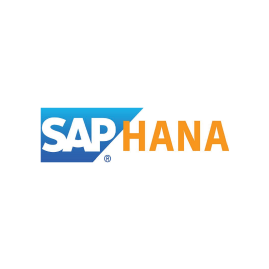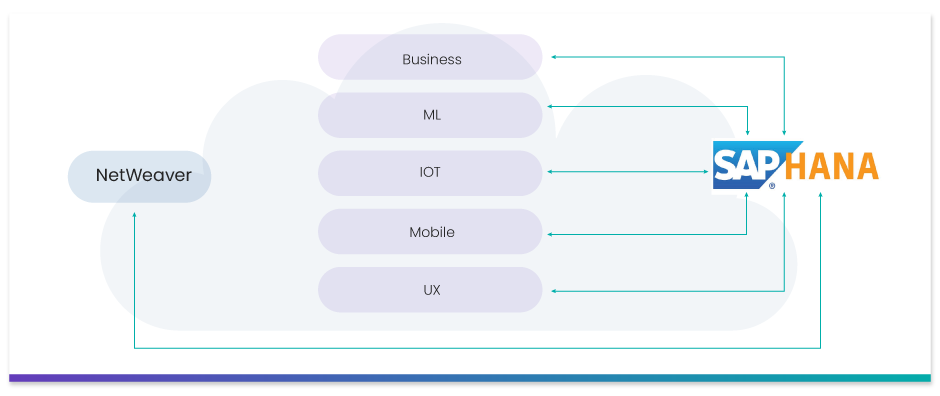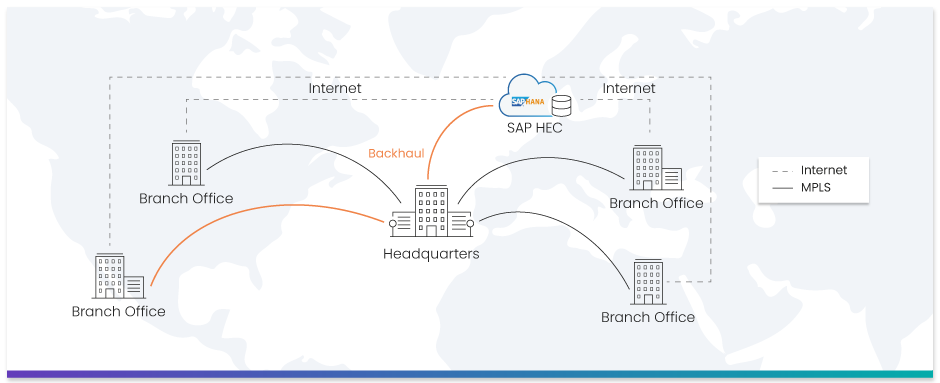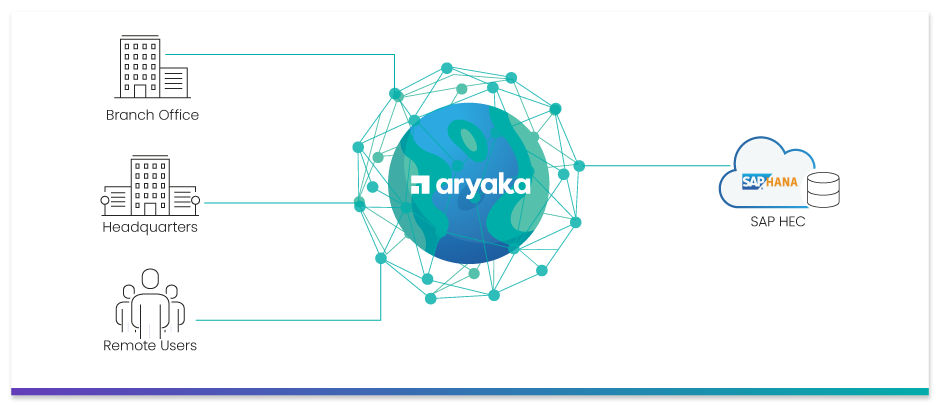
Designed from the ground up for faster data processing, portability, and high-availability, SAP HANA (High-Performance Analytical Appliance), leveraging an in-memory database, is orders of magnitude faster than any traditional database that runs on spinning media.
With an architecture that’s optimized for both fast queries and high-speed transactions, SAP HANA breaks all the traditional database barriers around processing complex data sets and compiling diverse transactional & analytical elements for gleaning real-time business insights.
Despite injecting a mammoth amount of data from numerous endpoints including traditional business sources, UX/UI data coming from the websites, data from the mobile workforce, and then the IoT devices and the machine learning units, and to top it up the data from the NetWeaver stack that sits in the middle of it and constantly talks back and forth to the HANA database; SAP HANA lets users instantly access those vast volume of structured and unstructured data with near-zero latency, allowing them to query data in an instant, on-demand as and when needed.

As a tool that crunches data flowing between dispersed operational units and numerous other sources, network connectivity is the centrepiece to the SAP HANA equation. To achieve broad SAP connectivity, you need a network that connects your HEC (HANA Enterprise Cloud) to any location, user, application, and data source, quickly, easily, and cost effectively. A requirement that’s hard to meet by traditional networks such as the MPLS and IPSec.
Not only does the rigid nature of MPLS goes against the founding ideology behind SAP HANA, which is to decentralize the SAP presence and make it available anywhere and everywhere, also, it is also hard for a tool that banks heavily on to-and-fro movement of data between different operational units and remote workers, to work with the hub and spoke architecture of the MPLS.
This architecture inadvertently overwhelms the network with data backhauling, causing the traffic to “trombone,” resulting in an inefficient route that increases the distance between the user and his or her application. This in addition to MPLS flexibility and scalability limitations.

Another option is to let each site connect individually to the SAP HEC via the public internet. However, customers must take into consideration the internet’s lack of bandwidth and latency guarantees. The result? In most cases, the public internet fails to keep up with the huge file transfers and large numbers of data packets being sent by SAP applications. This results in dropped data, slower transmissions, connection time-outs, and mediocre SAP application performance.
While adding more bandwidth may seem like a quick fix to put out the fire, it does little to improve throughput. As inconsistent latency kicks in, it disrupts this throughput, even over smaller distances, due to network congestion and network peering policies. And, even if latency is addressed, the network will still be highly congested, pushing past its peak capacity and routing data across continents. Application performance is bound to be negatively impacted.
Connecting your branch offices to SAP HEC does not have to be difficult. What if there was an easy way to connect directly to and between all your SAP instances, without MPLS, complicated appliances, or the need for peering? Just like HANA, Aryaka, the Cloud-First WAN was built from the ground up on cloud-first principles. It lets users connect to their SAP HEC instances in 30 milliseconds or less, securely, from anywhere in the world.

The remote locations, branch offices and headquarters connect to Aryaka’s closest point of presence, with a full mesh is achieved in the cloud. The global private network eliminates the need for backhauling and single choke points. Built-in optimization and resiliency combined with guaranteed stable core latency ensures lightning-fast connectivity and zero congestion between the sites, data centers and SAP instances.
| Fully Managed Service | Optimized Performance | Fast Deployment Globally | Multi-Layered Security |
|---|---|---|---|
| Single solution for global multi-cloud connectivity over a software defined Layer 2 core. | Up to 30x faster application performance | Deploy anywhere in the world in hours. | Defense in depth protection for edge, core and cloud. |
| End-to-end reliability SLAs with up to 99.999% uptime. | Up to 98% bandwidth and data reduction for fast performance and a superior user experience | Global network of 35+ PoPs puts 95% of the world’s business population withing 30ms access to applications. | Dedicated private core network and compartmentalized and secured traffic. |
| 24x7x365 monitoring and CCIE-Level support | Any-to-any connectivity for all IaaS, PaaS, and SaaS applications | On-demand site and bandwidth changes. | Option for both network edge and cloud security including virtual firewall support. |
| Zero CapEx, pay as-you-go pricing |
Aryaka is the leader in delivering Unified SASE as a Service, a fully integrated solution combining networking, security, and observability. Built for the demands of Generative AI as well as today’s multi-cloud hybrid world, Aryaka enables enterprises to transform their secure networking to deliver uncompromised performance, agility, simplicity, and security. Aryaka’s flexible delivery options empower businesses to choose their preferred approach for implementation and management. Hundreds of global enterprises, including several in the Fortune 100, depend on Aryaka for their secure networking solutions. For more on Aryaka, please visit www.aryaka.com.